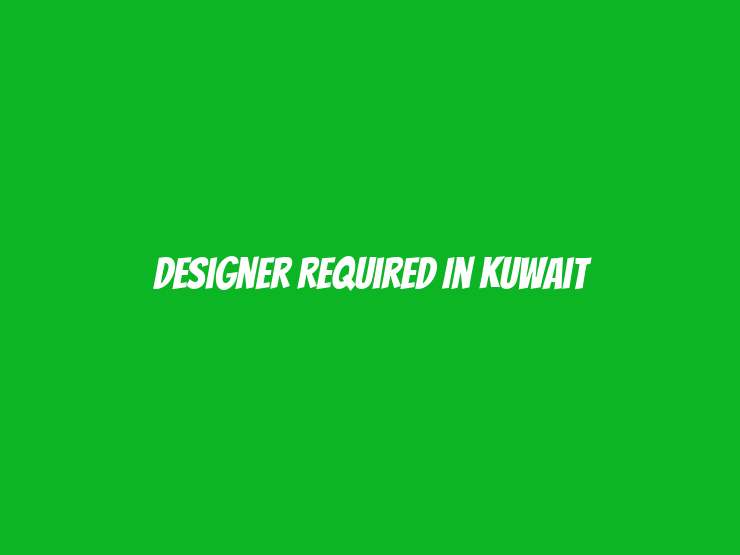A designer is responsible for creating visually appealing, functional designs for various applications, including digital media, print, product design, and branding. Designers use their creativity and technical skills to bring ideas to life, aligning designs with brand standards and project requirements. They may specialize in fields such as graphic design, web design, or product design, each with its unique demands and tools.
Dua for Job Seeking: اللهم يسر ولا تعسر واكمل ولا تكل وبارك لي فيما قَدَّرت
| Salary | Market Competitive |
| Experience | 2+ years |
| Location | Kuwait |
| Qualification | Any Graduation |
| Posted | 01 November 2024 |
| Job Type | Full-Time |
| Posted by | Habeebi Recruiter |
| last date to apply | apply within 15 days |
Key Responsibilities of a Designer
Concept Development and Research
Designers start projects by brainstorming concepts and conducting research to understand the project goals, target audience, and brand identity. They gather inspiration and develop initial design concepts that align with client needs or organizational objectives. This early planning stage ensures the design process is aligned with the client’s vision and market expectations.
Visual Design and Creation
Using design software such as Adobe Creative Suite, Figma, or specialized CAD tools, designers create layouts, illustrations, and graphics that meet the project specifications. They focus on elements like color, typography, composition, and functionality to create cohesive and visually impactful designs. This stage involves iterative feedback, refining designs to meet quality standards and client preferences.
Collaboration with Cross-Functional Teams
Designers work closely with clients, marketing teams, developers, and other departments to ensure the final product aligns with overall goals. They communicate design ideas, present mockups, and incorporate feedback from stakeholders. Effective collaboration ensures the design meets functional and aesthetic requirements, making it well-suited for the intended audience.
Revising and Refining Designs
Designers must be flexible and responsive to feedback, revising and refining their work to achieve the best possible outcome. This involves adjusting designs based on critiques, performing quality checks, and fine-tuning elements to ensure clarity and usability. Consistent refinement is key to producing polished, professional results.
Staying Updated with Industry Trends
Keeping up with design trends, software updates, and new tools is essential for designers to stay competitive. Designers often participate in workshops, follow design blogs, and experiment with new techniques. Staying current allows them to bring fresh, modern ideas to their projects and adapt to changing industry standards.
Skills and Competencies for a Successful Designer
A successful designer combines creativity with strong technical skills, attention to detail, and an understanding of user experience principles. They should be proficient in design software, able to interpret client needs, and possess effective communication skills. Time management and a keen eye for aesthetics also contribute to success in this role.
How to apply:
Send your updated resume to our email:
Email: khalid@itech.com.kw
Disclaimer:
- We list jobs submitted by employers. HabeebiRecruiter.com does not verify employers or guarantee job details.
- Be aware: legitimate jobs never require upfront payment
